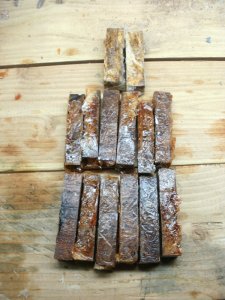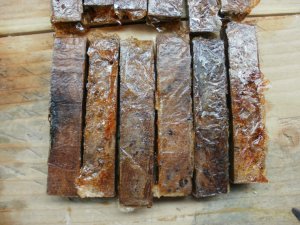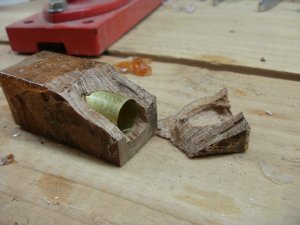Live2Dive
Member
Hey everyone. This is my first attempt at stabilizing wood. I have a ton of redwood burl and buckeye burl that needs to be stabilized. I bought some Cactus Juice and gave it a go. Here a few shots of what the result was.


Now, when I run them through my vacuum they absorbed a good deal of the cactus juice. I pulled them from the vacuum chamber and wrapped them in foil and tossed them into my toaster oven at 200 degrees for 45 minutes. After they cooled a bit, I unwrapped them and it looks like most of the 'juice' leached out and hardened on the outside of the blanks.
After letting one cool to room temp, I drilled and glued in a tube. When I went to square up the ends, the end just blew up. I even started my drill slow. Upon closer look, (and feel) it looks like the pen blank is dry, almost as if all the juice drained away. I can even press my thumb nail into the wood, it is so dry.

Has this happened to anyone else?


Now, when I run them through my vacuum they absorbed a good deal of the cactus juice. I pulled them from the vacuum chamber and wrapped them in foil and tossed them into my toaster oven at 200 degrees for 45 minutes. After they cooled a bit, I unwrapped them and it looks like most of the 'juice' leached out and hardened on the outside of the blanks.
After letting one cool to room temp, I drilled and glued in a tube. When I went to square up the ends, the end just blew up. I even started my drill slow. Upon closer look, (and feel) it looks like the pen blank is dry, almost as if all the juice drained away. I can even press my thumb nail into the wood, it is so dry.

Has this happened to anyone else?
